© ROOT-NATION.com - Use of content is permitted with a backlink.
The V-BAT, developed by Shield AI, is an unmanned aerial vehicle (UAV) capable of vertical takeoff and landing, similar to SpaceX rockets. These UAVs are already being used by Ukrainian military forces in combat operations.
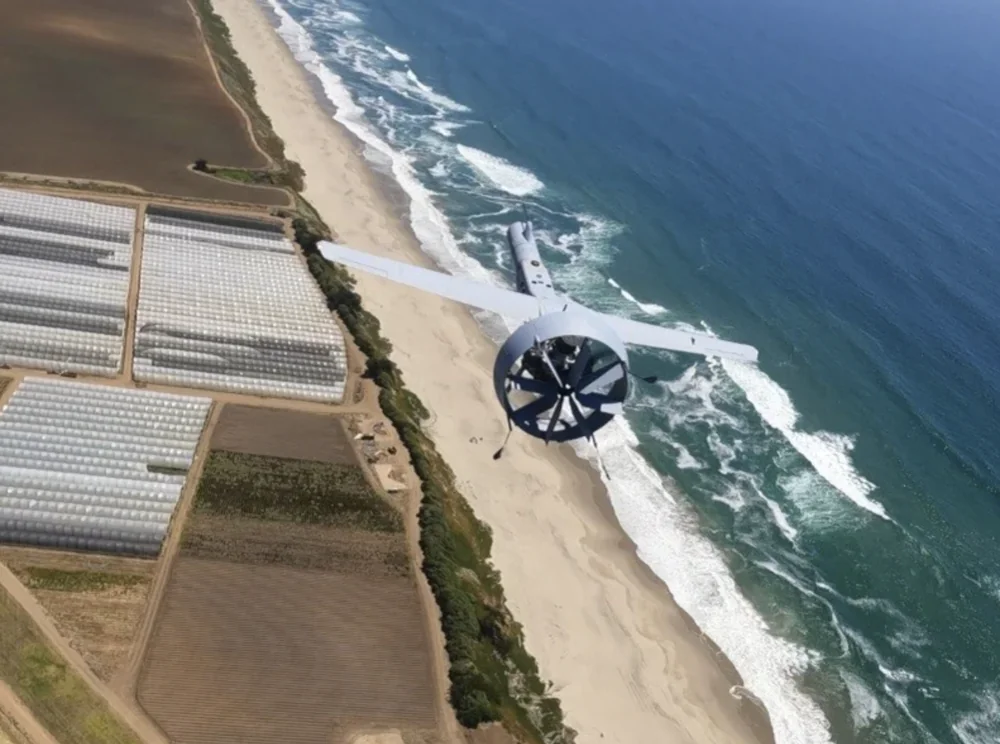
It is no longer a secret that Ukraine has secretly received advanced V-BAT drones to enhance its combat reconnaissance and precision strike capabilities. The V-BAT UAV, developed by the American company Shield AI, has been deployed to assist Ukrainian forces in detecting and targeting the Russian mobile air defense system SA-11 Buk-M1, allowing for its destruction using HIMARS multiple rocket launchers.
Read also: Weapons of Ukrainian Victory: LAV 6.0 ACSV Armored Personnel Carrier
Some interesting facts
In August 2024, Ukrainian special operators faced a critical challenge when Russian electronic warfare (EW) systems disabled their traditional reconnaissance drones. As a solution, they began using the V-BAT, a UAV specifically designed to withstand strong electronic interference, which has become increasingly common on the Ukrainian battlefield.

Operating at a distance of 40 km behind enemy lines, the V-BAT drones were able to fly past the front to detect and track the SA-11 Buk-M1 air defense system from over 100 km away. After identifying the targets, the drones transmitted precise coordinates to artillery units, enabling the HIMARS multiple rocket launch system to deliver successful strikes.
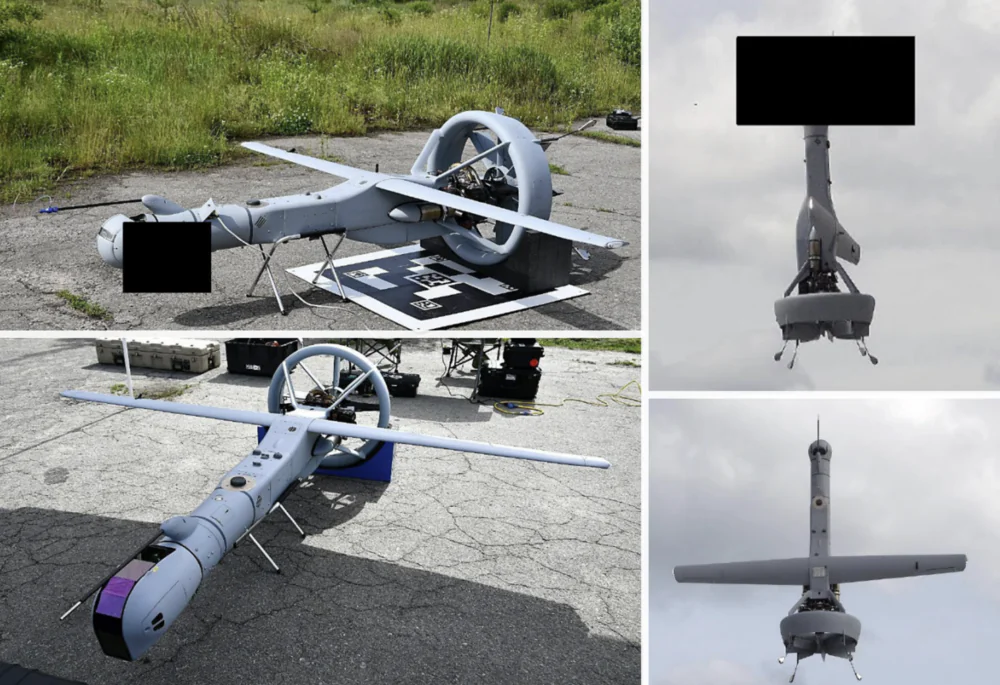
The V-BAT mission was a significant test of the drone’s operational capabilities, as it not only gathered and transmitted targeting data but did so under harsh electronic warfare (EW) conditions. According to Brandon Tseng, President and co-founder of Shield AI, this coordination—real-time intelligence collection and transmission to long-range artillery systems—showcased the unique adaptability of the V-BAT in today’s EW environment. Unlike other UAVs that can avoid EW systems due to onboard autonomy, the V-BAT offers data transmission over extended distances, making it ideal for coordinating with powerful artillery systems like the Lockheed Martin HIMARS.
Let’s take a closer look at these unique UAVs, developed by Shield AI, and equipped with advanced technologies.
Read also: Weapons of Ukrainian Victory: Precision-Guided AGM-154 JSOW Glide Bomb
Why V-BAT UAVs are interesting
The V-BAT is a versatile platform known for its ease of use, mobility, and ability to perform various tasks in constrained environments.
These UAVs are capable of vertical takeoff and landing, significantly expanding their usability in urban areas, on ships, and in locations with limited space for takeoff. They are particularly useful in situations where traditional aircraft or horizontally-launched drones cannot operate effectively.
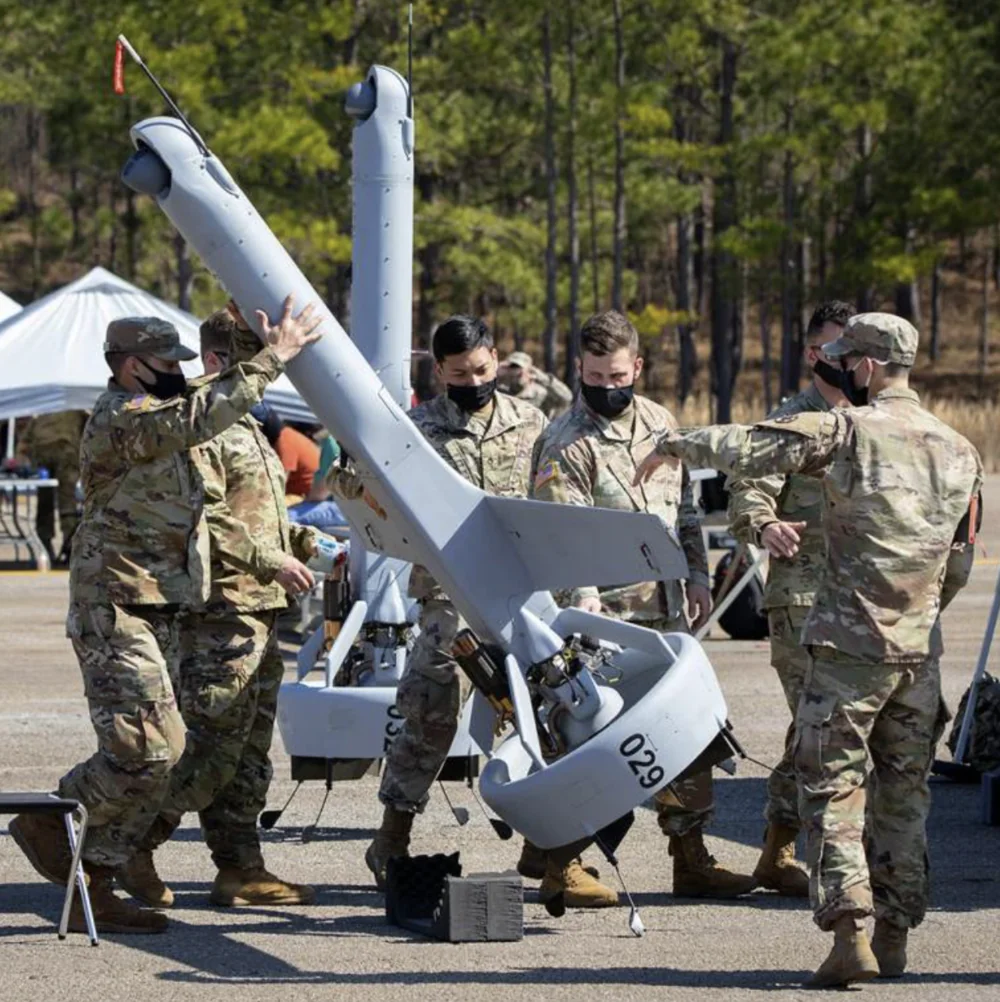
The V-BAT UAV is relatively compact, weighing around 40 kg, which makes it easy to transport in disassembled form. Its simple assembly allows for quick deployment, which is particularly useful when there is a need for rapid response to unfolding events.

The V-BAT offers a long flight endurance of up to 10 hours on a single charge, depending on the payload. This allows it to effectively carry out reconnaissance missions that require extended time in the operational area, such as surveillance, data collection, and artillery or MLRS strike coordination.
The V-BAT can carry a variety of payloads, from high-resolution cameras for reconnaissance to sensors or even light armament. This versatility makes it suitable for a range of tasks, including intelligence gathering, surveillance, and search-and-rescue operations.
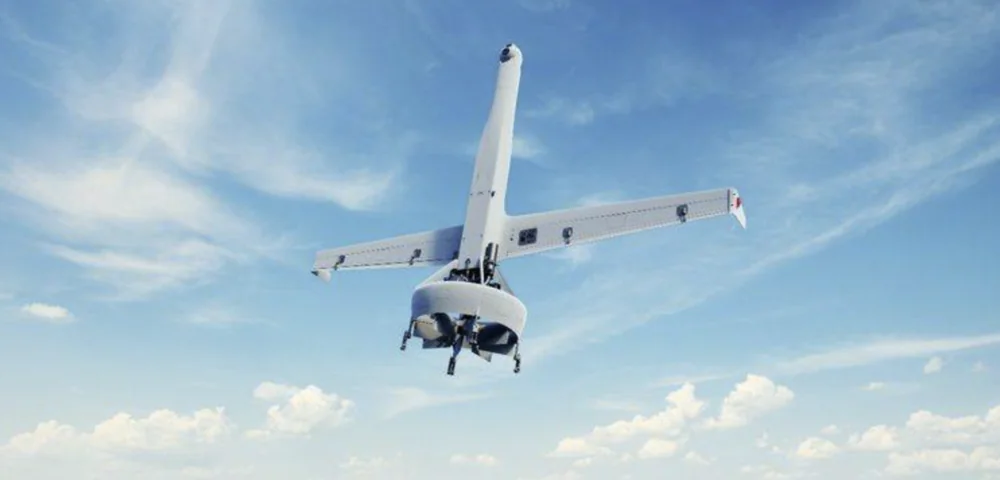
Thanks to its vertical flight and landing capability, along with good maneuverability, the V-BAT is well-suited for operations in challenging terrain, such as mountainous areas or dense forests, where standard aircraft or larger drones struggle to perform the required tasks.
The V-BAT is successfully used in both military and civilian missions. It is employed in maritime operations, reconnaissance, and land security operations. Additionally, it can support infrastructure monitoring (such as pipelines and oil platforms) or environmental monitoring in remote and hard-to-reach areas.
Read also: Laser Weapons: History, Development, Potential, and Prospects
History of the V-BAT UAV creation
The V-BAT UAV was developed in the early 2010s by MLB, a company acquired by Martin UAV in 2015. Later, Martin UAV was acquired by Shield AI. In August 2010, the V-BAT was selected for a project by the U.S. Defense Advanced Research Projects Agency (DARPA). In September 2011, the U.S. Air Force signed its first contract with MLB, AAI Unmanned Aircraft Systems, and Brigham Young University (BYU), which were directly involved in the V-BAT’s development. AAI Unmanned Aircraft Systems was responsible for designing the system for initial drone production, while BYU provided control algorithms and assisted with flight testing. The first test flight took place in February 2012. Equipped with a 5.5 kg battery, the V-BAT, carrying a 0.5 kg payload, made its first vertical takeoff, flew 5 km, and performed a vertical landing.
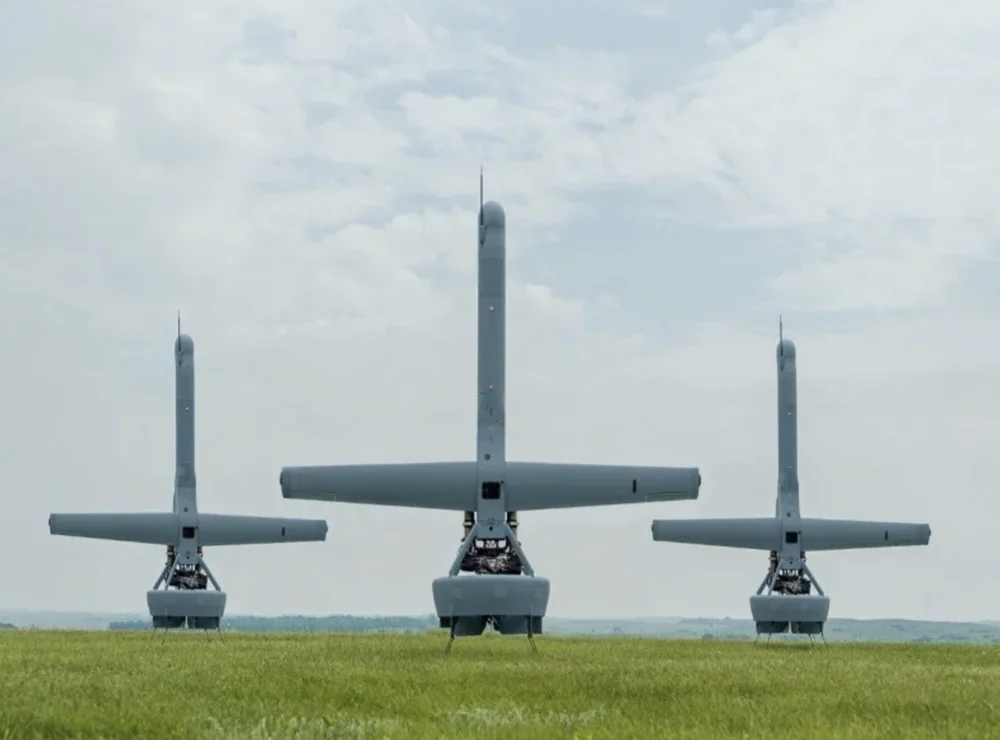
The unconventional UAV has managed to attract interest from potential clients, including the U.S. Navy and Marine Corps. This is not surprising, as the drone can be used for a wide range of missions, such as protecting special operations forces, air patrolling, target detection and identification, monitoring small objects, operations aboard ships, aerial mapping, urban surveillance, autonomous delivery and payload deployment, as well as monitoring wildlife and agricultural areas.
As a result, throughout the latter half of the 2010s, the V-BAT underwent various tests. It operated from land-based platforms, ship decks, and performed a range of missions.
As the testing continued, the V-BAT’s design was refined. Specific components were replaced, and its software was updated. Additionally, companies like Northrop Grumman and Shield AI joined the project, which opened up new possibilities for the drone’s development.
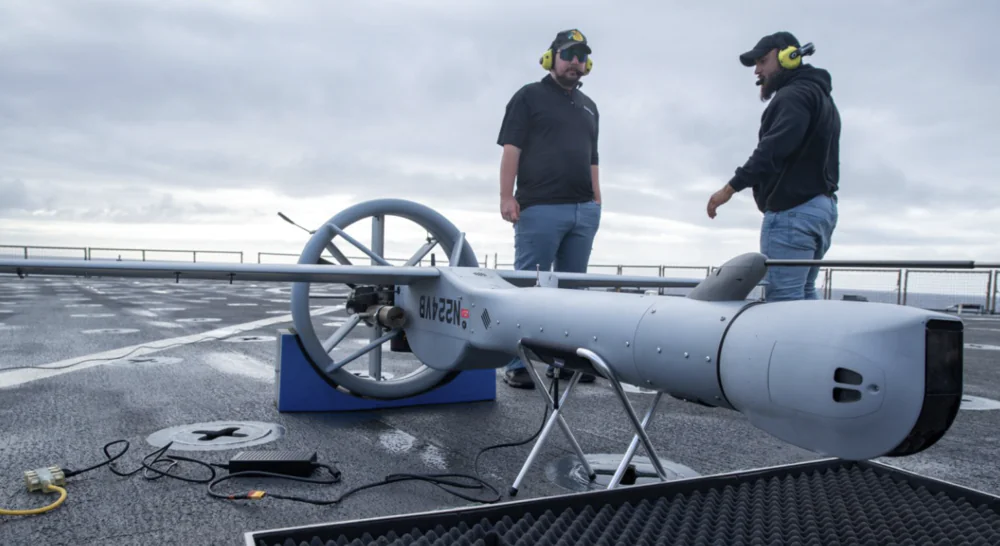
The V-BAT UAV can be assembled by just two people in under 20 minutes, making it an ideal expeditionary system for quick deployment and adaptation to mission requirements.
Read also: Weapons of Ukrainian Victory: Long-range AASM Hammer bombs
Design features of A-BAT UAV
The V-BAT is a vertical takeoff and landing (VTOL) UAV capable of both hovering and horizontal flight. It follows a tail-sitter design, meaning it starts in a vertical position on the launch pad, then transitions to a horizontal flight mode after takeoff, similar to a conventional aircraft.
In terms of construction, the V-BAT has a fuselage that houses the avionics and propulsion system, along with a long, slender wing featuring ailerons. The tail section of the fuselage contains a circular channel with a pusher propeller inside. The rear edge of the channel is equipped with aerodynamic control surfaces. Additionally, the UAV’s airframe is modular, making it easier to transport.
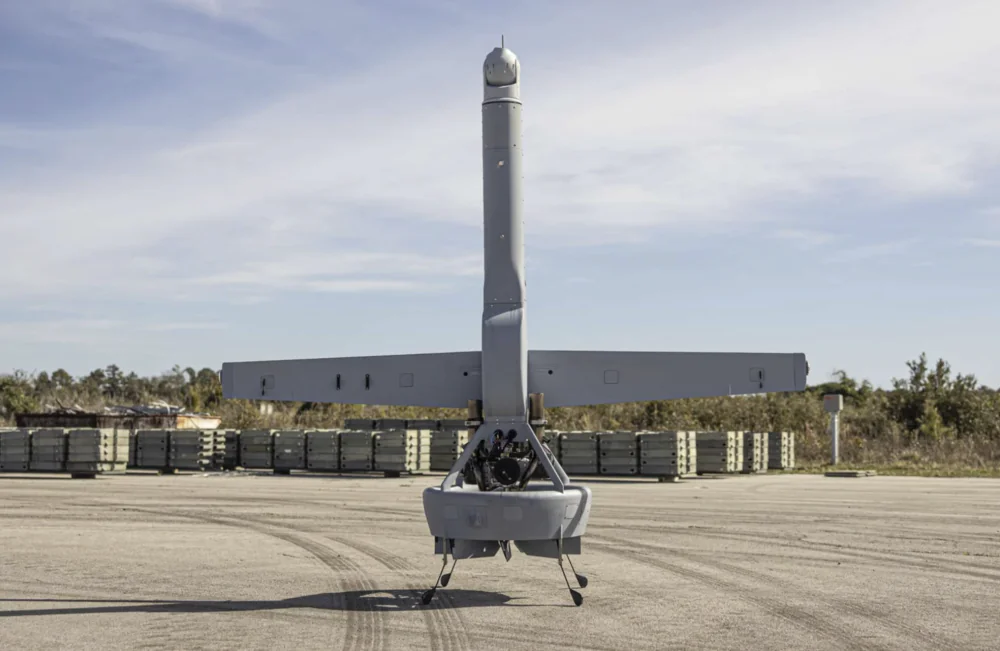
The V-BAT has a length of 2.73 meters and a wingspan of 2.95 meters. The diameter of the propeller channel is 711 mm, and its dry weight does not exceed 57 kg. The UAV’s payload capacity is 11.3 kg, with the ability to choose from available options and quickly swap payloads.
Deployment of the V-BAT at a position is carried out by a two-person crew and takes no more than 15-20 minutes. A launch and landing area of no more than 3.6 x 3.6 meters is required. The V-BAT can be used both on land and on ships. The system’s automation allows it to take off and land on a moving platform, even in adverse weather conditions.
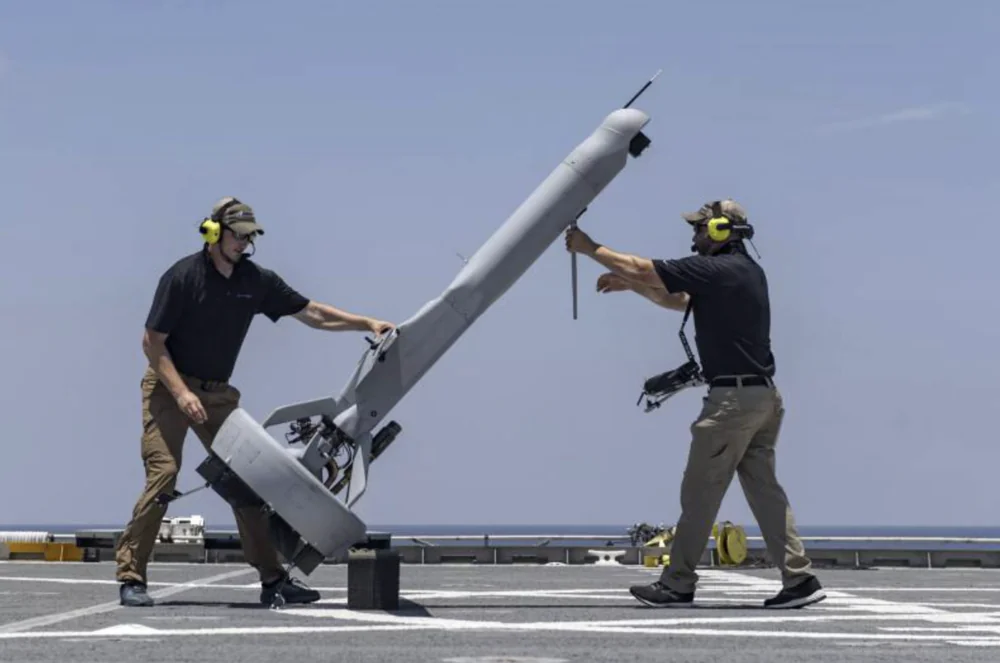
For convenient transportation, the V-BAT UAV is disassembled into several components. The wings are detachable and split into two parts, while the fuselage is also broken down. All elements of the drone, along with the associated equipment, are packed into a container of the smallest necessary size.
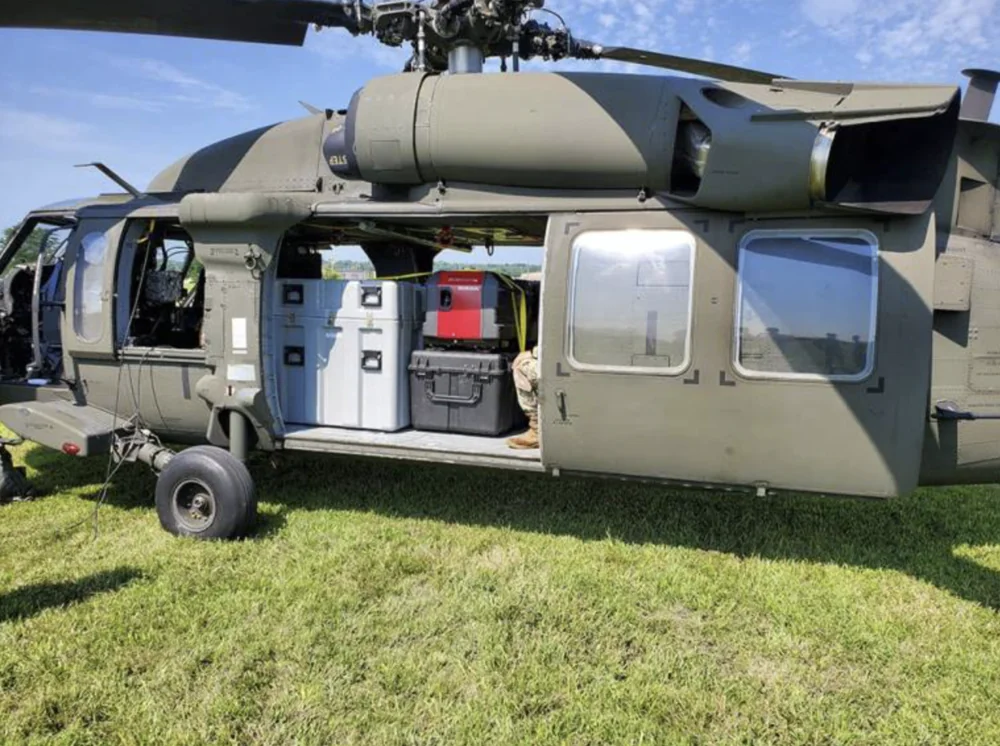
One such container can be transported by car, while the cargo version of the HMMWV can carry two systems.
Read also: Weapons of Ukrainian victory: Skynex anti-aircraft artillery systems from Rheinmetall
A-BAT UAV engine
The tail of the fuselage houses a piston engine with a pusher propeller. It is a two-stroke Suter TOA 288 engine with a displacement of 157 cc, generating 13 horsepower. The engine runs on a 40:1 mixture of Mogas with an octane rating of 90 or higher, and it has a fuel capacity of 9 kg.
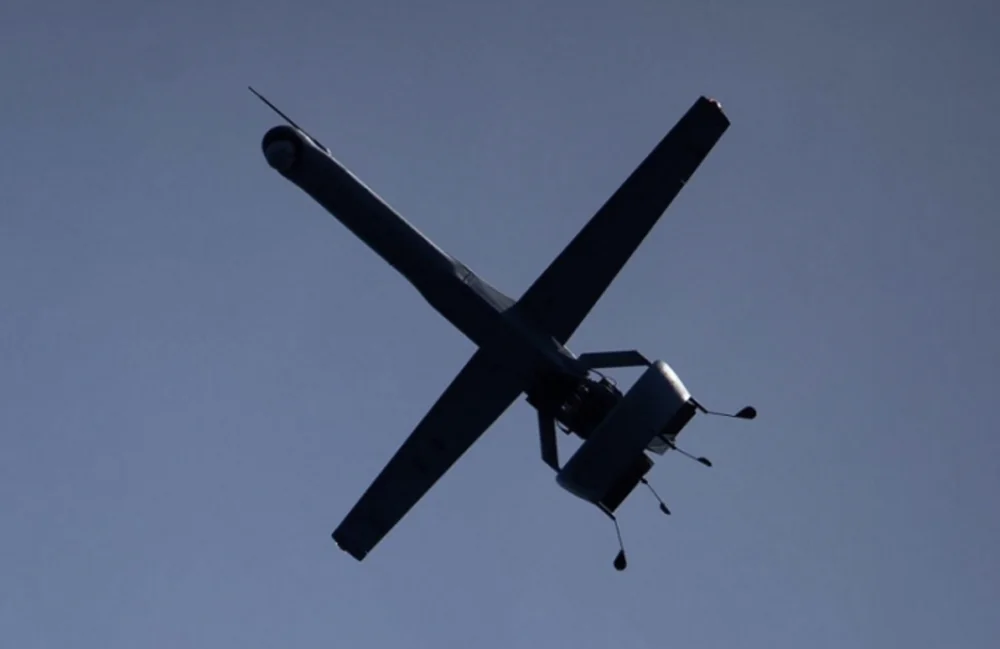
During vertical takeoff and landing, the engine-propeller system functions as a lift system. Once transitioning to horizontal flight, it provides forward propulsion. The engine’s power is sufficient to achieve the thrust required for vertical flight. The maximum horizontal flight speed reaches 165 km/h, with a cruising speed of 87 km/h, allowing the UAV to fly for up to 10-11 hours at that pace. The UAV can operate at altitudes of up to 6.1 km and withstand wind speeds of up to 25 knots. Its operational range extends up to 130 km, and the maximum recommended payload capacity is 11.3 kg, excluding fuel.
Read also: Weapons of Ukrainian Victory: UAV Primoco One 150
Payload and sensors on board the V-BAT UAV
The V-BAT is capable of carrying a variety of interchangeable and customizable payloads and sensors, including electro-optical/medium-wave infrared cameras, and artificial intelligence-based automatic identification systems for ground and maritime search over large areas.
The payload includes electro-optical and infrared sensors, as well as communication relays, enabling observation, detection, classification, and identification for all operational missions.
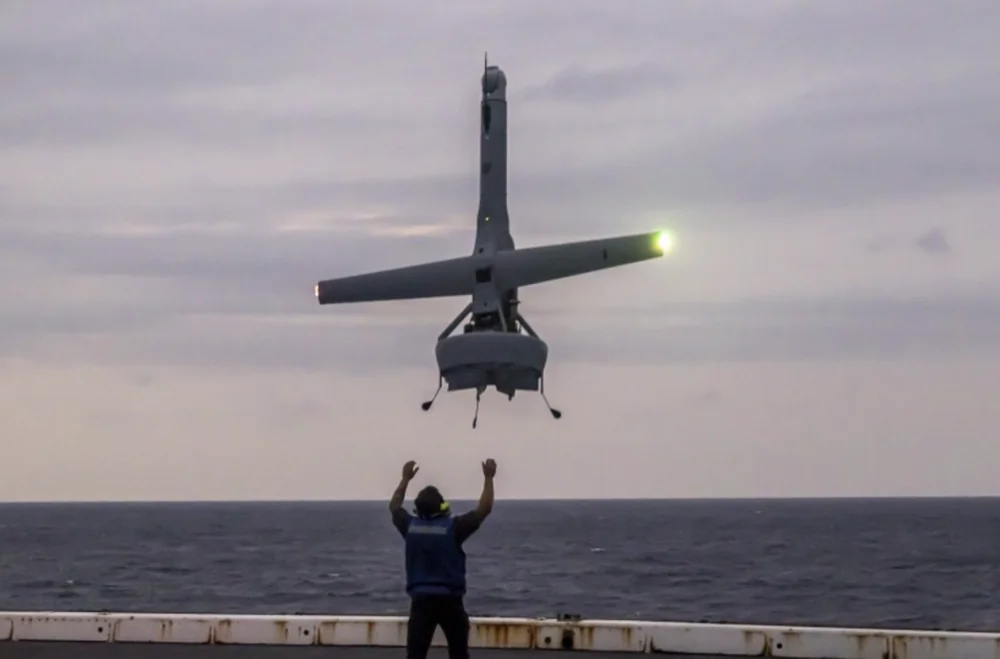
The front section of the fuselage provides space for installing an electro-optical station with the required specifications. Using any compatible electro-optical devices, the UAV can conduct reconnaissance, detect ground targets, and determine their coordinates.
The V-BAT, in its version from Northrop Grumman and Shield AI, features an updated onboard electronic equipment suite. It is equipped with modern navigation instruments. A two-way communication system allows for remote control and the transmission of data and video signals. The UAV also includes an autopilot capable of both horizontal and vertical flight, as well as transitioning between these modes. Due to its “tailsitter” design, specific requirements were placed on the autopilot and its algorithms to ensure smooth operation in different flight modes.
The UAV is also equipped with the lightweight, versatile TASE 150/200/400 Gimbal Cloud Cap payload system, which enhances performance and durability. The payload is stabilized on two axes, ensuring stable and reliable operation during flight.
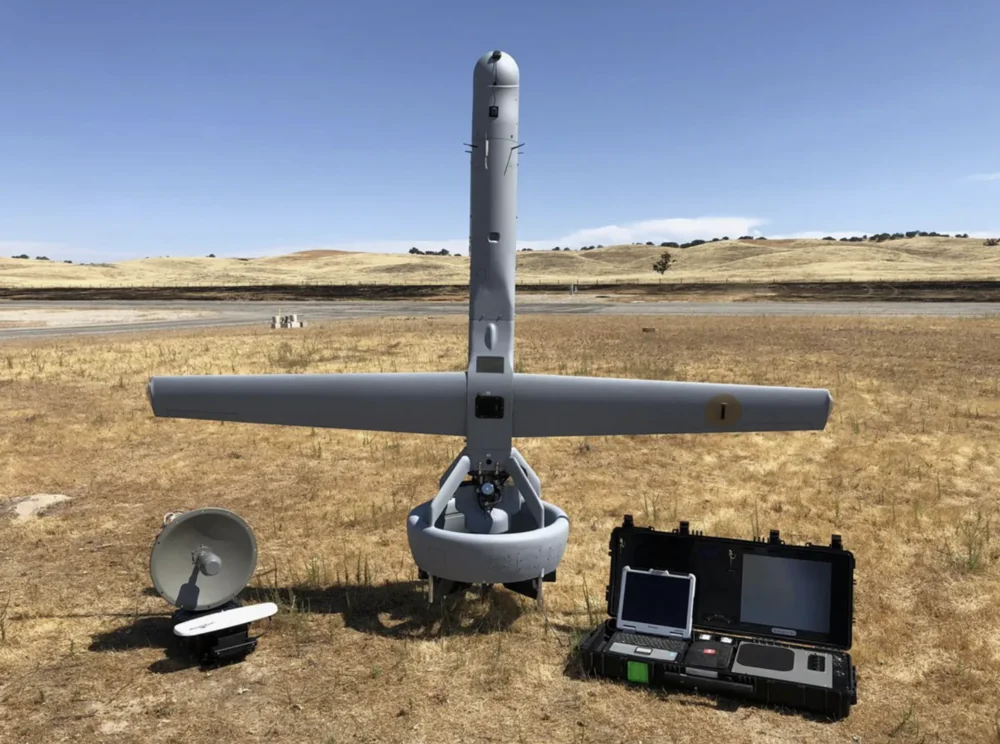
The payload system includes a GPS/INS system, which enables precise tracking and navigation. Image processing technology is employed for target tracking and scene management.
It is known that the V-BAT has been upgraded with the ViewPoint gimbal software for displaying video and command/control data. Additionally, a laser illuminator and laser rangefinder can be attached to the payload for enhanced functionality.
The UAV is equipped with a Canon 1-D camera and the Tetracam Mini-MCA (Multiple Camera Array) multispectral camera for capturing high-resolution images and video in real-time.
If desired, the V-BAT can be fitted with specialized payloads, additional sensors, and extended data transmission lines. For example, it can include LOS FM data transmission lines for command, control, and video information delivery over distances of up to 60 km.
Read also: Silent killers of modern warfare: most dangerous military UAVs
Technical characteristics of V-BAT UAV
- Length: 2.73 m
- Wingspan: 2, 95 м
- Total weight: 57 kg
- Power plant: twin-cylinder engine Suter TOA 288
- Maximum speed: 90 km/h
- Autonomous flight time: 10 hours
- Maximum altitude: 6100 м
- Avionics: electro-optical (EO)/mid-wave infrared (MWIR) cameras.
V-BAT’s prospects
The V-Bat UAV from Martin UAV has been around for quite some time and has undergone a series of tests. In all expected operational conditions, the drone demonstrated the required takeoff, landing, and flight characteristics, as well as the ability to conduct reconnaissance, targeting, and mission correction. However, the design of the drone and its control algorithms turned out to be quite complex.
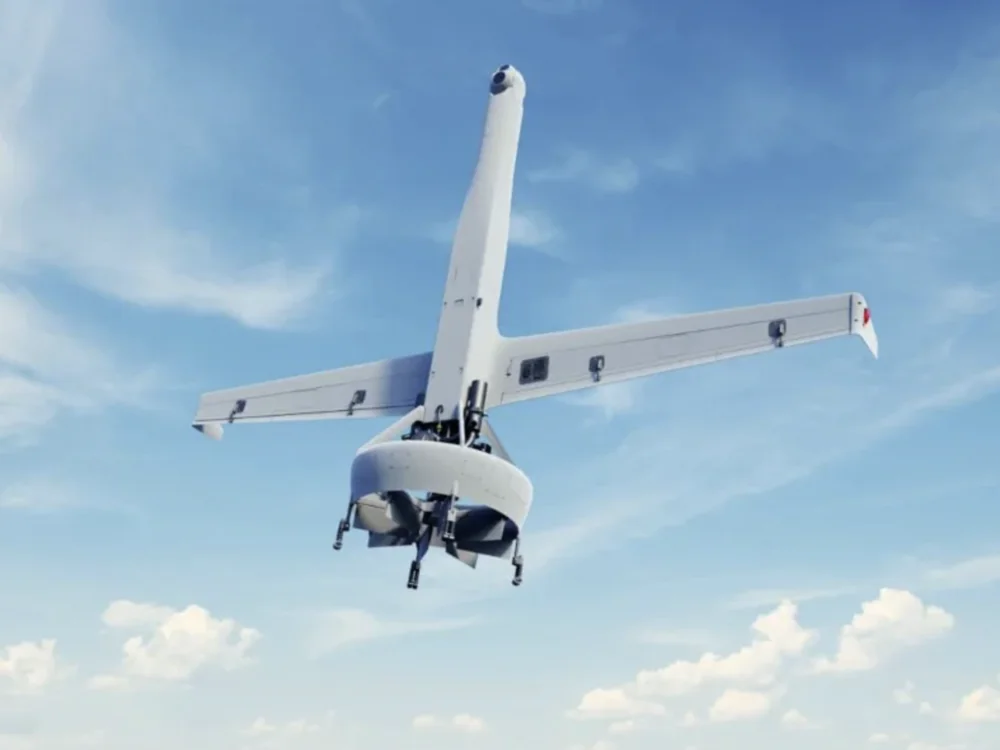
However, the development and modernization of the UAV are ongoing. In November 2021, Shield AI announced the development of the multi-role tactical UAV prototype Increment 2 (Mi2) in collaboration with the aviation division of the Naval Air Warfare Center Aircraft Division (NAWCAD). The company aims to deliver a completed prototype of the V-BAT Mi2 UAV to the U.S. government for testing and approval.
Some of the previous trials were conducted for the U.S. Navy and Marine Corps, which showed interest in the UAV system. Now, the V-BAT is participating in a new promising program, this time for the U.S. Army. The original design has been modified to meet the requirements of this new client, and a new experimental prototype will be built soon. Flights and tests under the Army’s FTUAS Inc 2 program are expected to begin later this year, with initial conclusions likely to be drawn by the end of the year.
The Shield AI V-BAT version for the Mi2 program from NAWCAD features two built-in modules that provide communication across two frequency bands, improving reliability in congested and complex environments.
The future of the V-BAT project within the context of the new U.S. Army program remains uncertain. On its own, the UAV appears to be a successful and promising design, but in the current competition, it will be compared with several other developments. It’s possible that one of these alternatives may be considered more suitable for use by ground forces, and Northrop Grumman, Martin UAV, and Shield AI may not emerge as the winners.
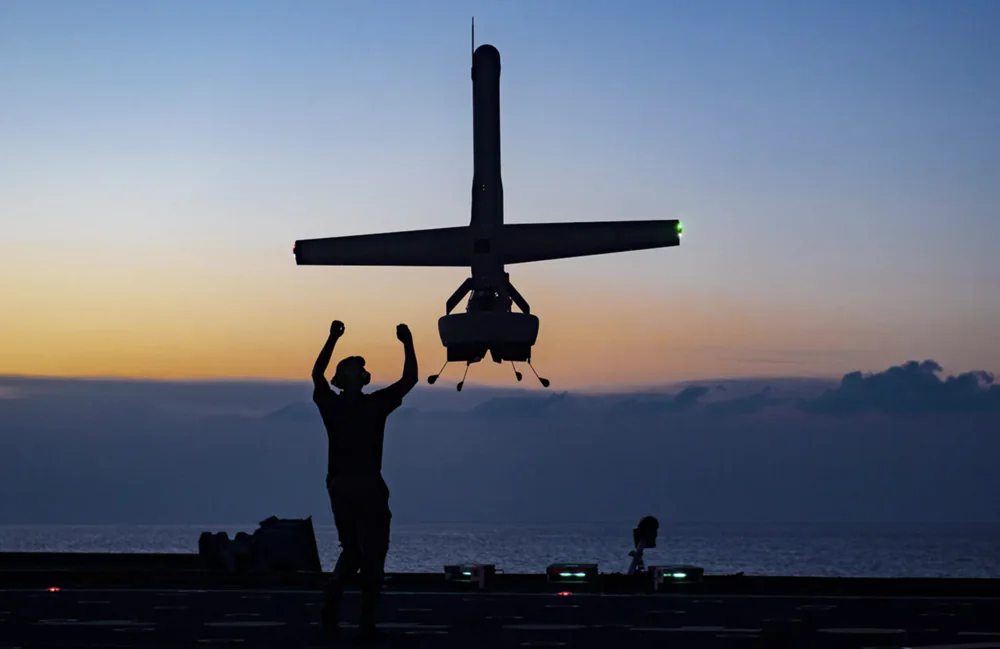
Overall, the developers of the V-BAT version for the FTUAS Inc 2 program may have a good chance of winning and securing lucrative contracts. However, to achieve this, they will need to continue advancing the UAV’s development and do everything necessary to convince the client of its advantages.
It is encouraging to see that our military is already using this advanced UAV. This shows that Western partners trust Ukraine and are doing everything possible to help our Armed Forces prevail on the battlefield.
State-of-the-art American UAVs are already assisting Ukrainian forces in defeating the enemy on the front lines. Therefore, we are sincerely grateful to our Western partners, especially our friends from the United States, for their support and the delivery of modern weaponry.
We believe in our defenders. The invaders have nowhere to escape from retribution. Death to the enemies! Glory to the Armed Forces of Ukraine! Glory to Ukraine!
And if you are interested in articles and news about aviation and space technology, we invite you to our new project AERONAUT.media.
Read also:
- Weapons of Ukrainian Victory: Sonobot 5 surface drones
- Weapons of Ukrainian Victory: JUMP 20 VTOL tactical reconnaissance UAV

